2.2: Neolithic Period
- Page ID
- 219956
\( \newcommand{\vecs}[1]{\overset { \scriptstyle \rightharpoonup} {\mathbf{#1}} } \)
\( \newcommand{\vecd}[1]{\overset{-\!-\!\rightharpoonup}{\vphantom{a}\smash {#1}}} \)
\( \newcommand{\id}{\mathrm{id}}\) \( \newcommand{\Span}{\mathrm{span}}\)
( \newcommand{\kernel}{\mathrm{null}\,}\) \( \newcommand{\range}{\mathrm{range}\,}\)
\( \newcommand{\RealPart}{\mathrm{Re}}\) \( \newcommand{\ImaginaryPart}{\mathrm{Im}}\)
\( \newcommand{\Argument}{\mathrm{Arg}}\) \( \newcommand{\norm}[1]{\| #1 \|}\)
\( \newcommand{\inner}[2]{\langle #1, #2 \rangle}\)
\( \newcommand{\Span}{\mathrm{span}}\)
\( \newcommand{\id}{\mathrm{id}}\)
\( \newcommand{\Span}{\mathrm{span}}\)
\( \newcommand{\kernel}{\mathrm{null}\,}\)
\( \newcommand{\range}{\mathrm{range}\,}\)
\( \newcommand{\RealPart}{\mathrm{Re}}\)
\( \newcommand{\ImaginaryPart}{\mathrm{Im}}\)
\( \newcommand{\Argument}{\mathrm{Arg}}\)
\( \newcommand{\norm}[1]{\| #1 \|}\)
\( \newcommand{\inner}[2]{\langle #1, #2 \rangle}\)
\( \newcommand{\Span}{\mathrm{span}}\) \( \newcommand{\AA}{\unicode[.8,0]{x212B}}\)
\( \newcommand{\vectorA}[1]{\vec{#1}} % arrow\)
\( \newcommand{\vectorAt}[1]{\vec{\text{#1}}} % arrow\)
\( \newcommand{\vectorB}[1]{\overset { \scriptstyle \rightharpoonup} {\mathbf{#1}} } \)
\( \newcommand{\vectorC}[1]{\textbf{#1}} \)
\( \newcommand{\vectorD}[1]{\overrightarrow{#1}} \)
\( \newcommand{\vectorDt}[1]{\overrightarrow{\text{#1}}} \)
\( \newcommand{\vectE}[1]{\overset{-\!-\!\rightharpoonup}{\vphantom{a}\smash{\mathbf {#1}}}} \)
\( \newcommand{\vecs}[1]{\overset { \scriptstyle \rightharpoonup} {\mathbf{#1}} } \)
\( \newcommand{\vecd}[1]{\overset{-\!-\!\rightharpoonup}{\vphantom{a}\smash {#1}}} \)
Neolithic China – 7,000-1700 BCE
Between 7000 BCE and 1700 BCE, China saw the emergence of settlements along its primary river systems during the Neolithic period. These settlements were strategically located near waterways, with the Yellow River in central and northern China and the Yangzi River in southern and eastern China playing significant roles. This period marked a significant shift from a nomadic hunter-gatherer lifestyle to one of settled agricultural communities. With the advent of agriculture, complex social structures and technological innovation developed rapidly. Notably, this era saw the domestication of crops like millet and rice, as well as animals such as pigs and chickens, signaling the shift towards agriculture-based settlements.

Figure \(\PageIndex{1}\): Map of early settlements (Google Maps 2023, Terra Metrics 2023, Khan Academy)
“It is traditionally believed that Chinese civilization first emerged along the Yellow River and then spread to other parts of China. However, recent archaeological evidence suggests that a number of distinct cultures developed simultaneously across China, all along waterways. These cultures were located near the coastal areas, the Yellow River in the north and the Yangzi River in the south. They are usually named after the site where remains of the culture were first discovered by modern archaeologists.” [1] The different tags on the map of Neolithic China (2.2.1) display the sites excavated where artifacts were found. Because Neolithic people did not write, archaeologists study the remains found in excavated sites.
Exploring ONe of the Earliest Neolithic Cultures in China
The Yangtze Valley was where wild rice was first found and it quickly became a popular grain for domestication and harvesting on a large scale. The swampy land around the river provided ideal conditions for cultivating rice, and the communities that inhabited the area constructed sizable villages using an abundance of clay, bamboo, and reeds found in the marshlands. On the other hand, the Yellow River region had drier soil, leading to millet being the primary crop grown. Nevertheless, the frequent floods of the river deposited nutrient-rich soil that was perfect for cultivation, and the locals built their homes using clay and wood.
The impact of agriculture on human civilization was profound. With its ability to generate surplus food, it facilitated population growth and the formation of permanent settlements. This paved the way for the precursors of China's urban centers, as humans were able to establish stable communities. The establishment of villages and towns (2.2.2) allowed for the development of specialized skills beyond mere survival, such as pottery, weaving, and metallurgy. As a result, a diverse and complex society emerged.
_settlement_in_the_Yellow_River_Valley_in_northern_China_(02).jpg?revision=1&size=bestfit&width=586&height=782)
As people began to settle down, communities developed social hierarchies and specialized roles. With a surplus of resources, some individuals were able to focus on activities beyond food production, leading to the emergence of artisans, traders, religious leaders, and rulers. This diversification of roles paved the way for more complex societal structures. Houses were constructed using materials like wood, mud from riverbanks, and thatched roofs, with different designs reflecting various cultural positions. The ability to produce pottery allowed for better storage of food and water, facilitating the growth of larger communities. Advancements in agriculture also led to the development of plows and irrigation systems, boosting crop yields and supporting growing populations.
The Neolithic era was marked by a vibrant cultural scene, with a plethora of artistic expressions taking center stage. Pottery was a particularly crucial medium for showcasing creative expression, with intricate designs and patterns adorning vessels, reflecting the cultural beliefs and aesthetics of the time. Recent archaeological findings have revealed the early forms of religious practices and rituals that were closely tied to agricultural cycles. The discovery of (2.2.3) vessels at the site is a significant milestone, as they are some of the oldest known examples of painted pottery in the world.
Approximately 9000 years ago, in 7000 BCE, rice husks were utilized as a fermentation agent for growing rice. This marked a significant shift in food production and led to the development of novel cooking techniques. The hu pot, considered the oldest painted pot globally, is a remarkable artifact from this period. These pots feature abstract patterns and showcase the exceptional artistic skills of their makers. These breakthroughs and artistic achievements offer invaluable glimpses into the customs and traditions of our forebears.
Recent archaeological findings in southern China have uncovered the remains of ancient beer in close proximity to two human skeletons. This discovery has led experts to speculate that a ceremonial toast may have been offered to honor the deceased. The dig site, situated in Zhejiang Province, has yielded numerous hu pots with elongated necks containing traces of fossilized mold and yeast, which played a crucial role in the fermentation of rice. “This ancient beer though would not have been like the IPA that we have today. Instead, it was likely a slightly fermented and sweet beverage, which was probably cloudy in color.”[2]
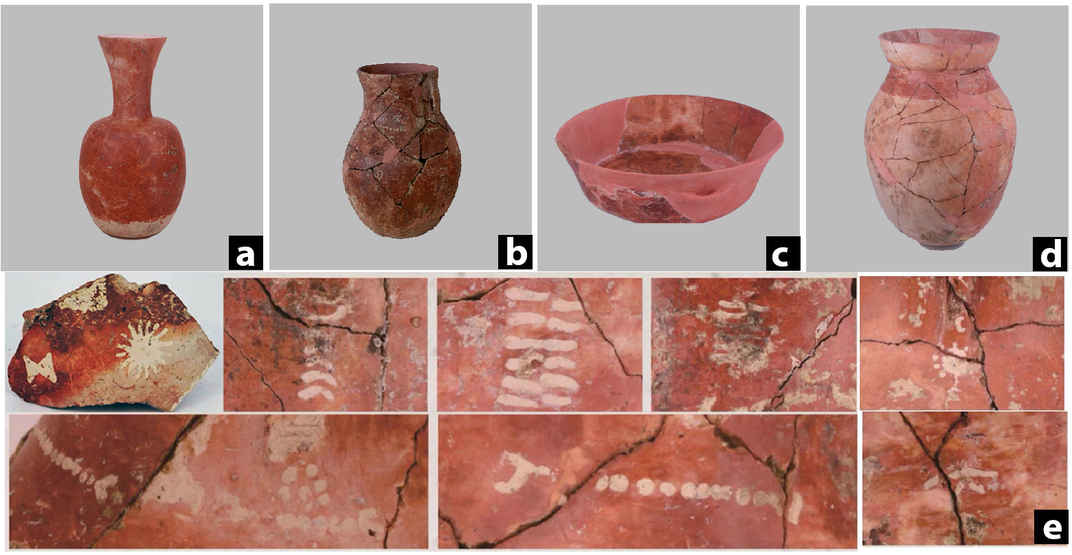
Jar (Hu), c. 2650–2350 B.C.E., earthenware with painted decoration, Neolithic China, Banshan phase, 34 cm high
The Neolithic era in China was a pivotal moment in human history, marking a significant shift from nomadic lifestyles to settled agricultural communities. This period saw the emergence of social hierarchies, specialized roles, and technological advancements, all of which laid the foundation for the growth of Chinese civilization. Even today, the cultural and technological achievements of this era continue to shape China's rich history, a testament to the remarkable adaptability and ingenuity of humankind
Neolithic Japan 13,750-5,000 BCE
The transition from hunter-gatherers to early agriculturists in Japan marks a pivotal transformation era. The indigenous Jomon culture gradually transitioned from a nomadic hunter-gatherer lifestyle to a more settled existence characterized by the emergence of early agricultural practices. This period, spanning thousands of years, laid the groundwork for the subsequent cultural and societal developments that shaped the archipelago's history. The Neolithic period in Japan, often synonymous with the Jomon culture, is a fascinating chapter in the nation's history. Spanning from approximately 14,000 years ago to around 500 BCE, this era witnessed the gradual shift from a purely hunting and gathering lifestyle to one that incorporated elements of agriculture, leading to the establishment of semi-settled communities and the emergence of unique artistic and cultural traditions.
Around 13,750 BCE, Japan's earliest settlements emerged while the country was connected to continental Asia via a narrow land bridge. With the end of the Ice Age came rising seas, forming numerous islands. These islands provided a newfound source of vegetation that served as food for both humans and animals. Shellfish was a staple in the diet of early and later civilizations, evidenced by the discovery of large piles of shells or middens in small villages. By 5000 BCE, the Jomon people began to emerge, cultivating some agricultural crops while still relying on hunting and gathering from the plentiful sea and land food sources.
The Jomon culture is renowned for their exceptional pottery, characterized by elaborate cord-marked designs. This art form served both practical and symbolic purposes, being employed for cooking and storage, while also conveying cultural and spiritual symbolism. The cord-marked pottery (2.2.4) stands as a testament to the artistic sensibilities of the Jomon people, offering valuable insights into their social interactions, rituals, and evolving lifestyles throughout history. “Historical evidence suggests that large heating pots with pointy bases and early ornamental rope markings were made. They were typically bag-shaped and burned at low heat.”[3] Despite the gradual shift towards agriculture, the Jomon people relied on hunting, fishing, and gathering for sustenance. The archipelago's diverse ecosystems offered abundant resources such as fish, shellfish, nuts, and edible plants. The persistence of these practices underscores the intricate balance between tradition and innovation as the society navigated its transformation.
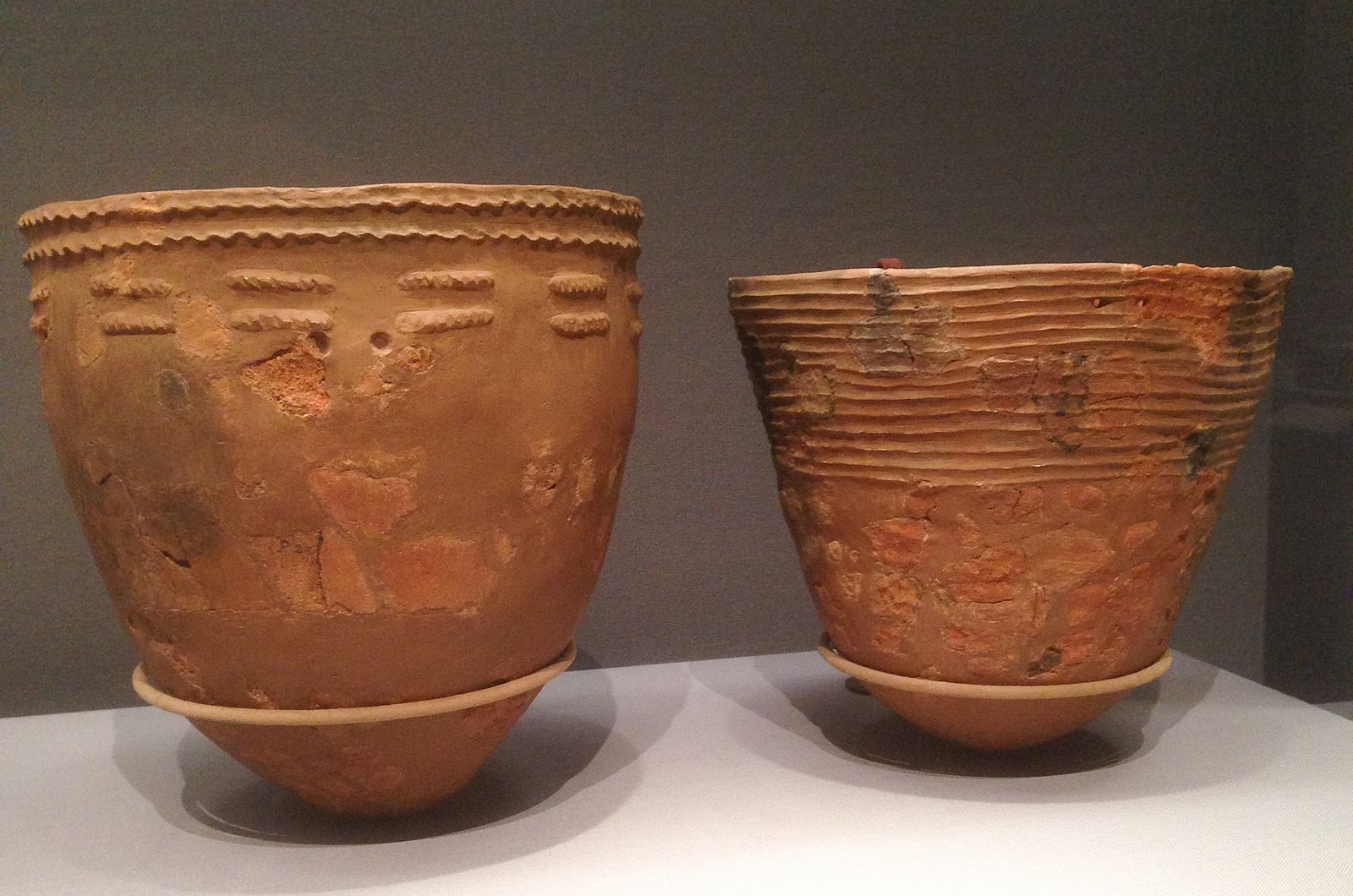
In the Neolithic era, settlements began to emerge in areas rich in resources, including coastlines and riverbanks. These communities were semi-permanent and marked a significant transition from a nomadic lifestyle to a more stable one, resulting in the creation of well-defined social structures. As these communities expanded, individuals interacted more, leading to the establishment of local customs, social norms, and community identities. Although the early Jomon people's agricultural practices were not as advanced as those of later periods, they did experiment with cultivation, growing crops such as millet, beans, and potentially rice, which contributed to a more diverse diet. Even though hunting and gathering remained essential, these early agricultural attempts laid the groundwork for Japan's future as an agrarian society.
The Neolithic Jomon culture boasts a culturally and spiritually rich history. Evidence of clay figures and ritual items discovered at burial sites and settlements suggest a belief in a world beyond our own and religious customs. The intricately crafted designs on pottery and symbolic objects uncovered offer a glimpse into the society's understanding of the world, its connection to the environment, and the coexistence between the mundane and the divine.
The Jomon people showcased their ingenuity by fashioning tools from various materials such as stone, bone, and antler. Through the refinement of their tool-making techniques, they became adaptable and efficient in utilizing resources. Their pottery, early agricultural methods, and unique cultural expressions have left an indelible mark on Japan's contemporary cultural landscape, serving as a bridge between ancient customs and modern identity. When we delve into the Neolithic era, we uncover a tale of transformation, perseverance, and inventiveness. By delving into the intricacies of Jomon culture, we gain a deeper appreciation for the intricate interplay between humans, nature, and the unstoppable march of progress that shaped Japan's history.
Neolithic Mongolia (5,000 BCE - 3000 BCE)
East Asia boasts of Mongolia, a captivating country with a remarkable Neolithic heritage that offers a precious glimpse into the traditions and habits of the early nomadic groups. Mongolia's diverse landscape of deserts, steppes, mountains, and plateaus played a crucial role in influencing the lifestyle of its Neolithic inhabitants. Their ability to adjust to varied surroundings enabled them to partake in a wide range of activities, including farming, herding, and hunting.
The Neolithic period in Mongolia experienced a vital breakthrough around 5000 BCE, with the introduction of agriculture. This transformational shift was made possible by the domestication of essential plants such as millet, wheat, and barley, as well as animals like cattle, sheep, goats, and horses. Nomadic herding was a crucial aspect of their livelihood, with the latter playing a central role in both transportation and food production. Remarkably, archaeological excavations have unearthed evidence of horse utilization and the consumption of horse milk dating back to 3500 BCE. Once the horses were domesticated they became an important asset to the region.[4] Sophisticated stone tools are hallmarks of the Neolithic period in multiple places. The stone axe (2.2.5) in Mongolia was made by chipping away a stone to create the axe head. Animal sinew or tendon was used to bind the stone to a handle making a strong useful tool.

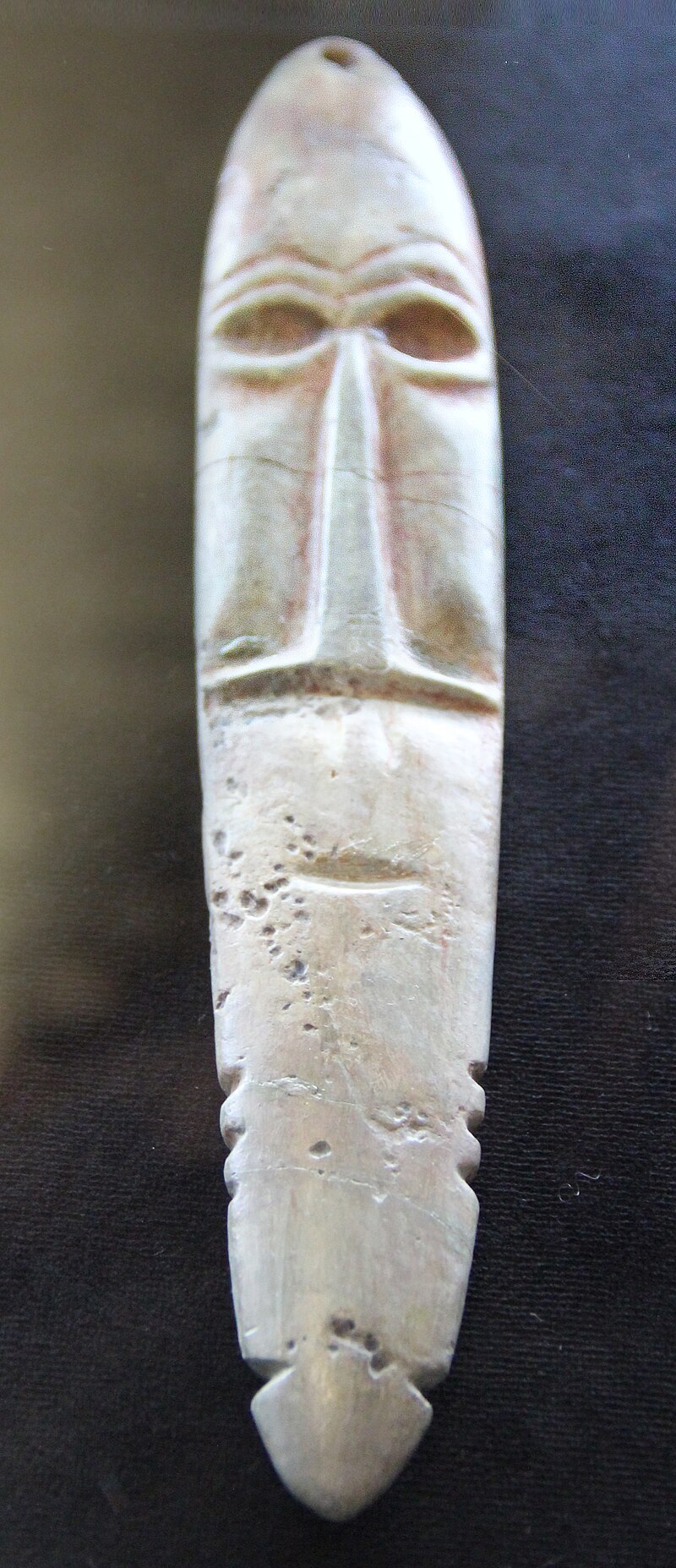
Mongolia boasts an array of remarkable archaeological wonders, including the famed deer stones and khirigsuur, which hold immense historical significance. Deer stones are colossal megaliths adorned with intricate carvings of deer, hunters, and geometric patterns, while khirigsuur are burial mounds that preserve the remains of sacrificed horses and other creatures. These remarkable features offer invaluable insights into the spiritual and burial customs of Neolithic Mongolian societies. Megalithic structures known as deer stones or reindeer stones (2.2.6), adorned with symbols, are found primarily in the Mongolian Plateau. Historians postulate that these stones may have had a protective function for the deceased, as they are often located in close proximity to ancient graves, though their precise purpose remains uncertain. With over 700 deer stones scattered throughout the plateau, it is apparent that they are rooted in shamanistic traditions.
Throughout history, shamans have served as important intermediaries between the physical and spiritual realms. By performing sacred rituals, they sought to safeguard the welfare of their communities. The utilization of deer stones and other sacred objects in these ceremonies is evidence of the profound and meaningful role that shamanistic traditions played in daily life. These artifacts also offer valuable insight into the cultural and spiritual significance of animals within their society. The captivating history of Neolithic Mongolia is a tribute to the enduring bond between humanity and the natural world.
Neolithic Tibet (5,000 BCE - 2000 BCE)
The Neolithic era of Tibet is a captivating moment in human history. It was a time of change, as people shifted from nomadic pastoralism to a more settled lifestyle, leading to cultural development. This period, which occurred thousands of years ago, laid the foundation for Tibet's unique cultural heritage and its intricate relationship with the high-altitude environment. It tells a story of human adaptation and innovation in one of the world's most challenging landscapes. The Neolithic era spanned several millennia and marked a transformative shift from nomadic hunting and herding to more settled agricultural practices. Additionally, it saw the emergence of distinct cultural traits that continue to influence the region today. During this period, the population of Tibet was a mixture of the original Paleolithic people and immigrants from northern China who settled on the Tibetan plateau.
The early inhabitants of Tibet were nomadic pastoralists whose livelihoods depended on herding animals such as yaks, sheep, and goats across the vast plateau. These nomadic traditions were driven by the unique topography and climate of the region, where the high-altitude environment posed both challenges and opportunities for survival. Over time, some communities in Tibet began to transition from a nomadic lifestyle to a more sedentary one, marked by the adoption of agriculture. Early evidence suggests that millet, barley, and other cereal crops were cultivated in certain areas, reflecting the resilience and adaptability of these ancient communities in the face of environmental constraints.
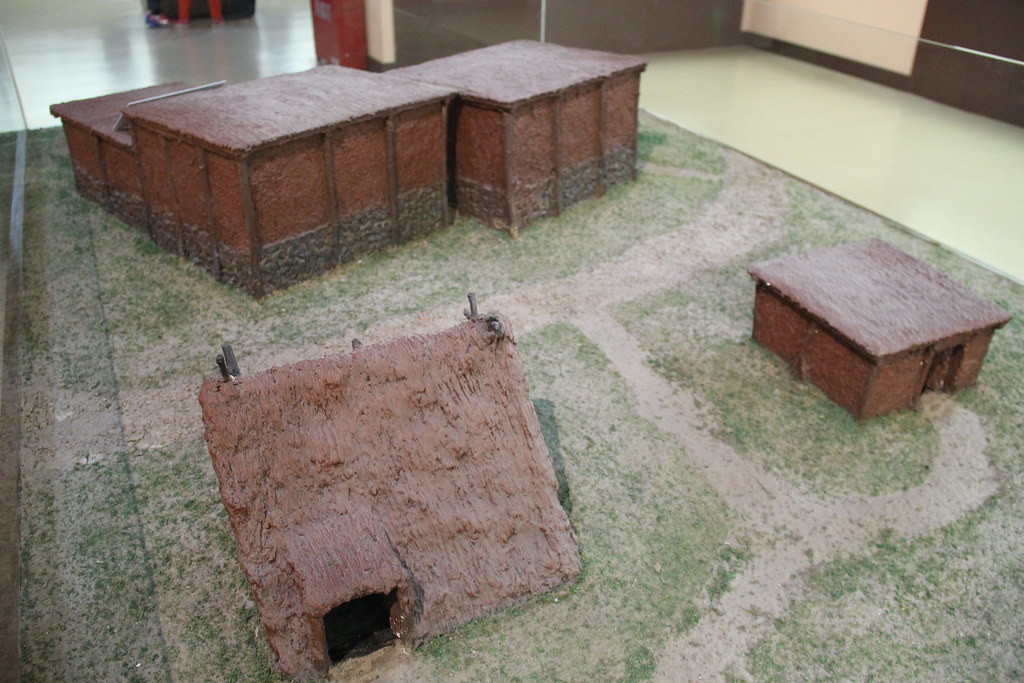
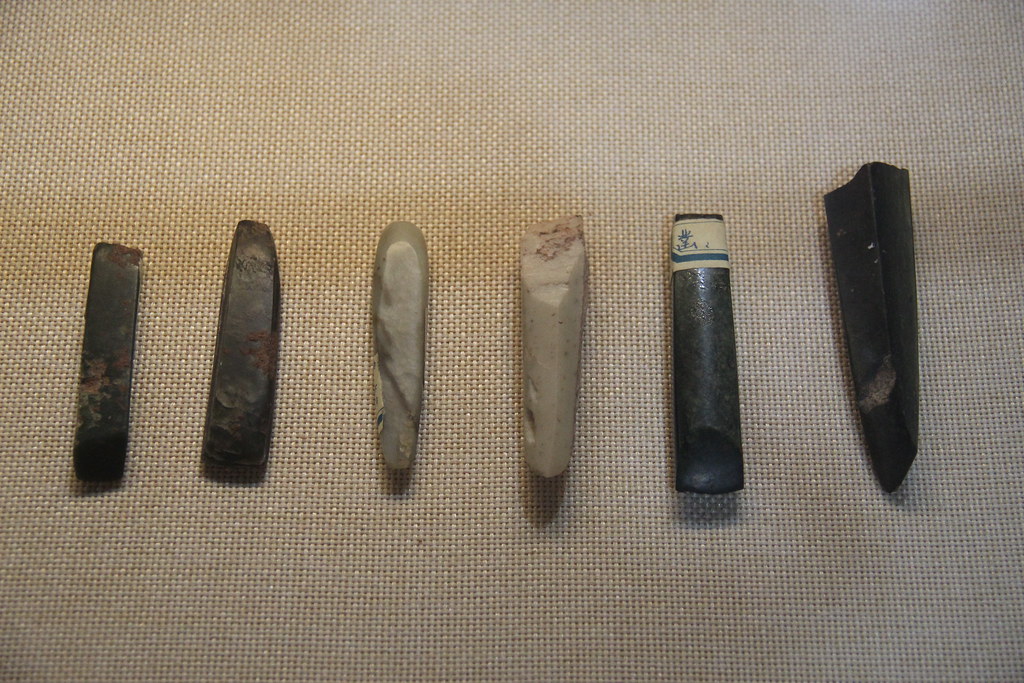
The area boasts an ample amount of rock art and petroglyphs that offer valuable insights into the spiritual and artistic lives of its past inhabitants. These ancient artworks frequently portray animals and symbolic motifs, offering a window into the early forms of spiritual beliefs and social organization that shaped Tibet's cultural heritage. The region's population was remarkably innovative, utilizing their technological skills to thrive in a difficult environment. They constructed elevated structures (2.2.7) like stone houses and defensive walls to shield themselves from potential threats and the elements. Additionally, they demonstrated their ingenuity by using basic tools (2.2.8) crafted from stone and bone.
Despite the challenges posed by Tibet's high-altitude environment, its inhabitants developed resource management strategies that allowed them to thrive. The Neolithic Tibetans efficiently utilized their limited arable land and sustainably managed their herds, laying the foundation for a deep connection with their environment and a philosophy of responsible stewardship. As they transitioned from a nomadic lifestyle to early agricultural practices, they paved the way for a unique cultural identity and enduring connection to the land. Exploring the remnants of this ancient era offers insight into the enduring spirit of the people who shaped Tibet's past and continue to influence its future.
Neolithic South Asia (6,000 BCE - 3000 BCE)
The Neolithic period in South Asia is a pivotal moment in the region's past, symbolizing a momentous shift from nomadic hunting and gathering to early agricultural practices and the rise of intricate societal structures. This transformative period laid the groundwork for a rich cultural inheritance, technological progress, and the growth of civilization. Spanning numerous centuries, the Neolithic era denoted a profound transition as individuals gradually moved away from ancient nomadic ways of life to more established communities involved in agriculture and other groundbreaking endeavors.
In the early days of the Neolithic era, people primarily relied on hunting and gathering to survive. They followed the movement of animals and plants within the region, searching for sustenance. One of the most noteworthy advancements during this time in South Asia was the transition from a nomadic lifestyle to settled agriculture. The domestication of crops like wheat, barley, and millet, as well as animals such as cattle and sheep, was a game-changer. The agricultural revolution enabled communities to produce their own food and generate surplus resources, ultimately leading to the establishment of more permanent settlements.

Indigenous peoples utilized stone, bone, and antler to fashion a variety of tools, which they honed for specific uses such as farming, hunting, and building. As their techniques grew more sophisticated, they developed polished stone tools and pottery, showcasing their mastery of materials and methods. With the advent of agriculture, Neolithic communities in South Asia transitioned to a more settled lifestyle (2.2.9), giving rise to villages with structured social hierarchies. The surplus of food from farming allowed for specialization, leading to the emergence of artisans, traders, and other non-agricultural roles. These early settlements laid the groundwork for future, more intricate societies and urban centers. Villages were constructed in an orderly fashion, some with designated storage areas, public baths, and drainage systems. Pottery was adorned with intricate designs and patterns, serving both utilitarian and artistic functions. As communities established permanent residences, they developed religious rituals and belief systems, marking the origins of organized spirituality and religion.
The profound impact of Neolithic South Asia on the cultural and historical identity of the region cannot be overstated. The shift from a hunter-gatherer to an agrarian society laid the groundwork for a wealth of agricultural traditions, a vibrant tapestry of cultures, and remarkable technological advancements. Numerous practices that originated during this era still hold sway over modern society, such as agricultural techniques, artistic expressions, and the enduring bond between communities and their surroundings.
The Neolithic period is a testament to the innovative spirit and cultural evolution of ancient civilizations. In Arunachal Pradesh, India, a rare opportunity presents itself at a Neolithic archaeological site to peek into the lives of people who lived in this region thousands of years ago. One of the significant archaeological sites from this era is Daojali Hading, which provides invaluable insights into the practices, innovations, and ways of life of prehistoric inhabitants of the Indian subcontinent. Artifacts found at the site, such as ceramics, stone tools, and objects made from bone and shell, shed light on the culture of its Neolithic inhabitants. The pottery, adorned with intricate designs, serves practical purposes and showcases cultural expressions, reflecting the artistic and creative inclinations of the community. The inhabitants of Daojali Hading exhibited diverse subsistence strategies that enabled them to adapt to their environment. Evidence suggests that they engaged in hunting and gathering while also experimenting with early forms of agriculture. The site's proximity to a river might have facilitated these practices, enabling the cultivation of crops and the availability of water resources. Daojali Hading offers a captivating glimpse into the lives of ancient Indians who navigated their world with resourcefulness and creativity.
Neolithic Southeast Asia was a set of regions inhabited by people for thousands of years. The map (2.5.1) represents today’s Southeast Asia. During the neolithic period, small tribes of people were mainly hunter-gathers who began to settle into small villages and raise some crops and animals.
Neolithic South East Asia (9,000 BCE - 3,000 BCE)
 Figure \(\PageIndex{10}\): Map of Current Southeast Asia (Cacahuate, CC BY-SA 4.0)
Figure \(\PageIndex{10}\): Map of Current Southeast Asia (Cacahuate, CC BY-SA 4.0)
Bắc Sơn culture (10,000-8,000) was one of the earliest cultures in Neolithic Vietnam. Archaeologists found multiple examples of Hoabinhian industry based on the edge-ground stone artifacts. Đa Bút culture (4,000-3,000 BCE) in Vietnam had people who were mainly hunter-gathers and some minimal growing of wet-rice in paddies and farming of livestock. They had large piles of shell middens by the cemetery. Early Neolithic farming in Thailand was located in multiples sites in Thailand and evidence of growing rice and other crops was found. Some creation and use of pottery was also seen. Archaeologists believe many small communities in Southeast Asia constructed settlements while maintaining their hunter-gathering lifestyles.
Hoabinhian was the term for a set of artifacts found in archaeological sites located throughout Southeast Asia. Many of the locations contained smaller tools and implements characterized as flaked and representing more primitive workmanship. The flaked tools generally had only one side or face to make the short axes or hammerstones. They also used tools made from bone. A stone was pounded and ground on one side instead of achieving a shaper edge by treating both sides of a stone. Sites containing the artifacts were found in today’s countries of Vietnam, Thailand, Laos, Myanmar, and Cambodia. Some cord-marked ceramics were also found in some of the locations. The regions were not heavily populated and most people were hunter-gathers relying on local plants, animals, and fish.
Archaeological studies have revealed that the Hoabinhian culture, which dates back to the Pleistocene period, existed in Southeast Asian caves. This culture was characterized by a hunter-gatherer economy with a specialization in pottery technology. The pottery technology found in these caves stands out as the oldest of its kind in the region and is a remarkable innovation of the time. Pottery was particularly useful for cooking and possibly roasting food faster, as it facilitated and accelerated the thermal processing of food. This innovation enabled the Hoabinhian people to cook food more efficiently and effectively while using fewer resources. Additionally, certain types of food require prolonged or repeated cooking to be safe for consumption or easy to digest. The use of pottery allowed for the preservation and storage of food for long periods, which was crucial for the survival of the Hoabinhian people.[5]
The Hoabinhian Pottery, which incorporates coarse-grained river sand, is known for its fragility due to the weak bond between the clay and sand particles. In order to make the surface of the vessels smoother, ancient potters used plant fibers, such as leaves or grass, which were carefully applied to the clay surface, leaving behind fine, parallel lines (2.5.2). The pots were constructed using clay coils, a technique that is still used in modern coiled pottery. The colors of these ceramics range from brick red to black, depending on the temperature and duration of firing in a kiln. At lower temperatures, the ceramics achieve a brick-red hue, while longer firing times result in a black coloration. The use of sand and plant fibers, along with the coiling technique, allowed ancient potters to create beautiful and intricate vessels that were both functional and aesthetically pleasing.
 Figure \(\PageIndex{11}\): Xom Trai, Vietnam. Pottery of Phung Nguyen culture. First group (CC BY-SA 4.0)
Figure \(\PageIndex{11}\): Xom Trai, Vietnam. Pottery of Phung Nguyen culture. First group (CC BY-SA 4.0)
[2] Retrieved from Wang, J., Jiang, L., & Sun, H. (2021). Early evidence for beer drinking in a 9000-year-old platform mound in southern China. PLOS ONE, 16(8), e0255833. https://doi.org/10.1371/journal.pone.0255833
[3] Meyer, I. (2022). Jomon pottery. Art in Context
[4] When Did Horses Transform Mongolians’ Way of Life?
[5] Gralak, T. & Nguyen, Viet. (2023). The beginnings of pottery technology in Vietnam based on finds from the Xom Trai Cave in the Hoà Bình Province. Przegląd Archeologiczny. 71. 10.23858/PA71.2023.2872.


